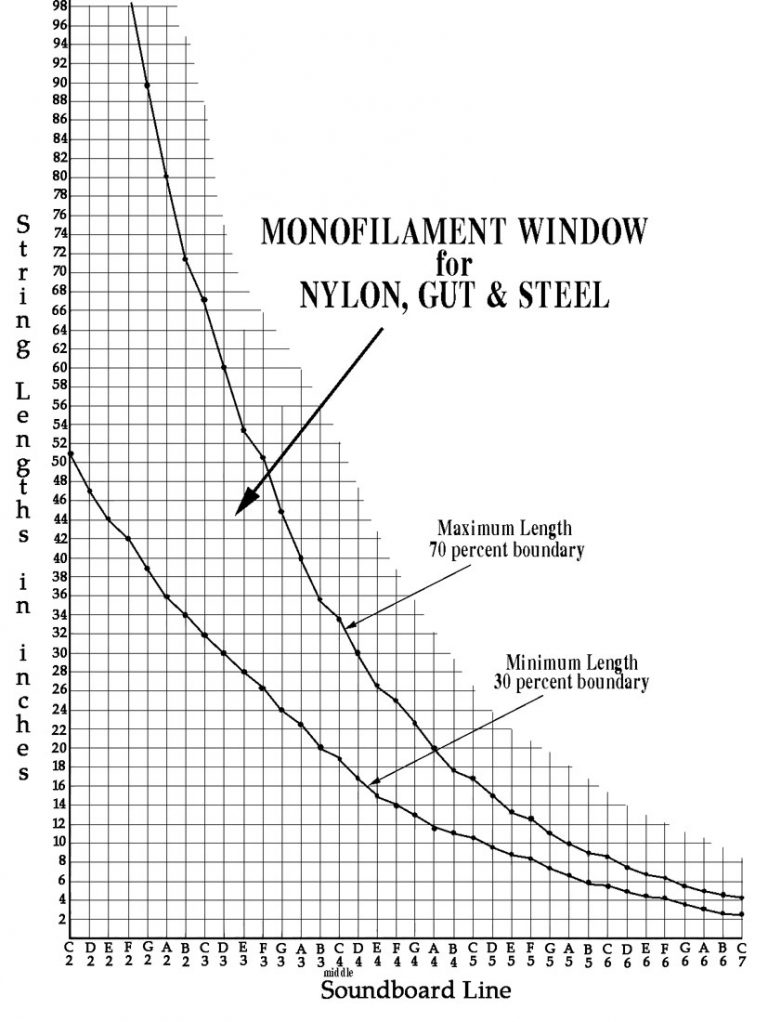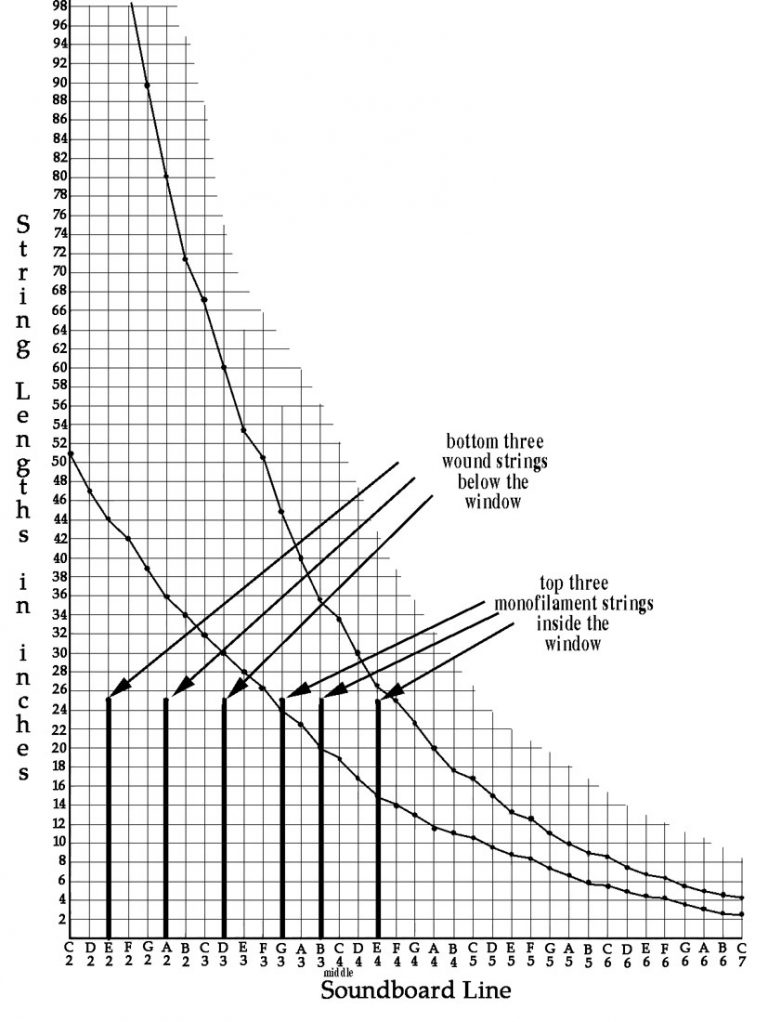Musicmakers Blog
The String Window
The String Window
Discover the limits of monofilament strings - incredibly helpful when designing a new instrument
This information is adapted from Jerry Brown’s Book, Folk Harp Design and Construction. Jerry geared the information toward harp building but the concept of the String Window is useful to understand for a variety or purposes: it should help you figure out the acceptable tuning range of, say, a homemade hammered dulcimer, or help you decide what kind of strings to get for an antique zither. You either have to know the vibrating lengths to see what notes they could be safely tuned to, or you need to know the tuning range you want in order to see what vibrating lengths will work for that range.
The key concept to understand is this:
For any given pitch (note) there is a safe window of vibrating lengths.
There is some math involved that explains how this works but we don’t need to get into that to understand the key concept. You do need to know that this string window is for monofilament (single strand) nylon, steel, and gut strings.
To apply the key concept, imagine that you want a string to sound the note C4 (middle C). What you learn from the String Window is that the vibrating length of that string needs to be at least 19” long and no longer than 33.7” long. If the string is shorter than 19” the tension will be too low and the string will be too flabby to make a good tone. If the string is longer than 33.7” long it is extremely likely that it will break because the tension is too high.
Changing the diameter of the string will NOT change the limits imposed by the String Window. That is to say, if a .036” diameter nylon string with a 34” vibrating length tends to break when tuned up to Middle C, so will a .040” diameter nylon string or a .025” diameter nylon string of that same length, when tuned up to the same pitch. I know, it sounds counterintuitive, but it is true.
Notice that the highest strings have a narrower window of acceptable lengths than the lowest strings. This is quite important. If you are not careful at the top of the range, you will end up with strings that break because they are just an inch too long, or sound dead because they are an inch too short for the assigned pitch.
Below is the String Window Chart. Click here for the String Window data in table format.

What builders do to make a relatively short string sound good at a low pitch is to switch from using a monofilament string to some sort of compound string made up of a core with some wrappings around it. This allows you to go below the minimum line.
Think of a guitar. Its 6 strings span two entire octaves of pitch (E2 to E4) even though the vibrating lengths are all the same (about 25 inches). This is accomplished by having monofilament strings (nylon or steel) in the high range, where they fit in the window, and wound strings in the low range where fall below the window.

Looking for more resources to find strings? Try these:
